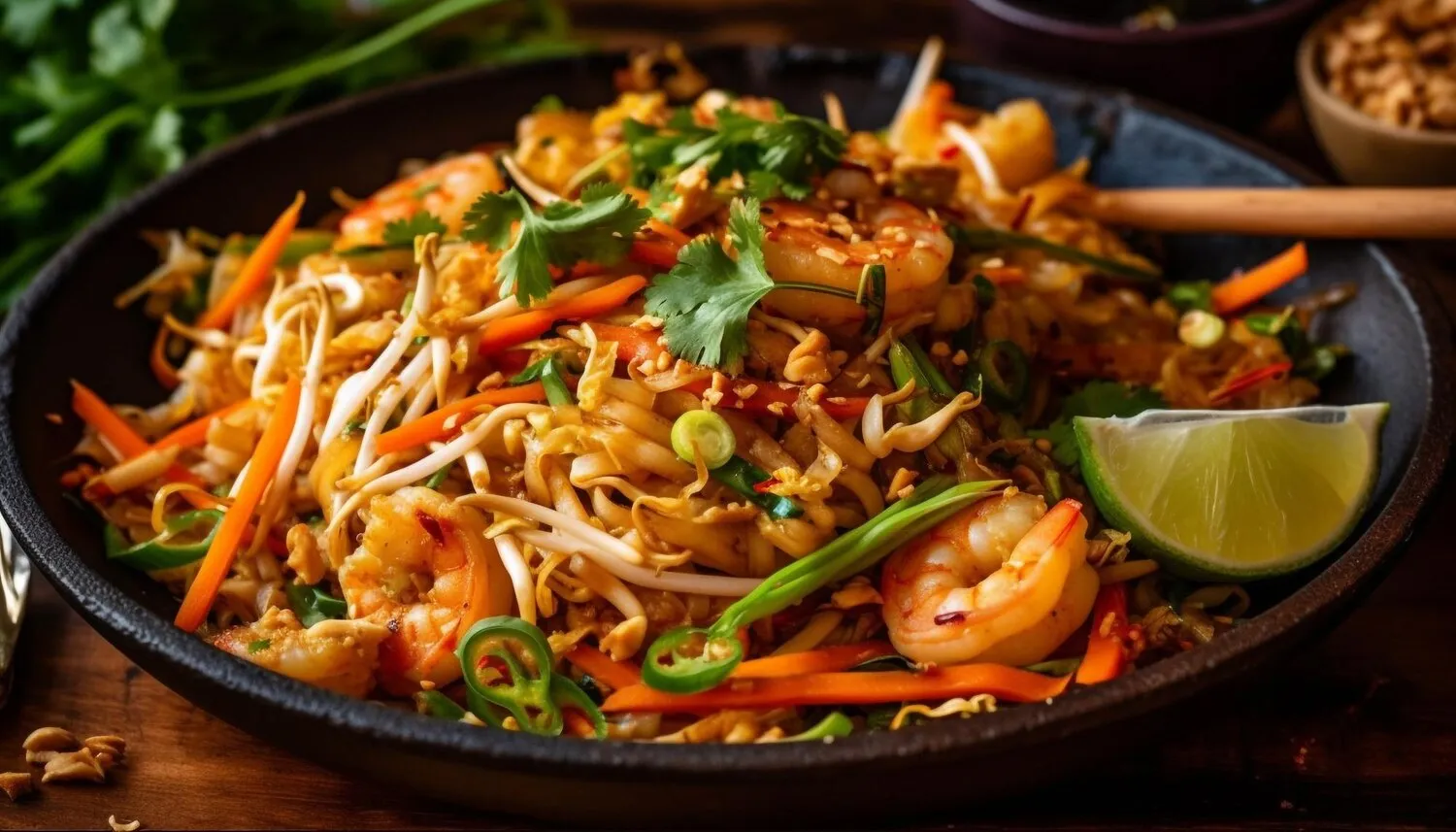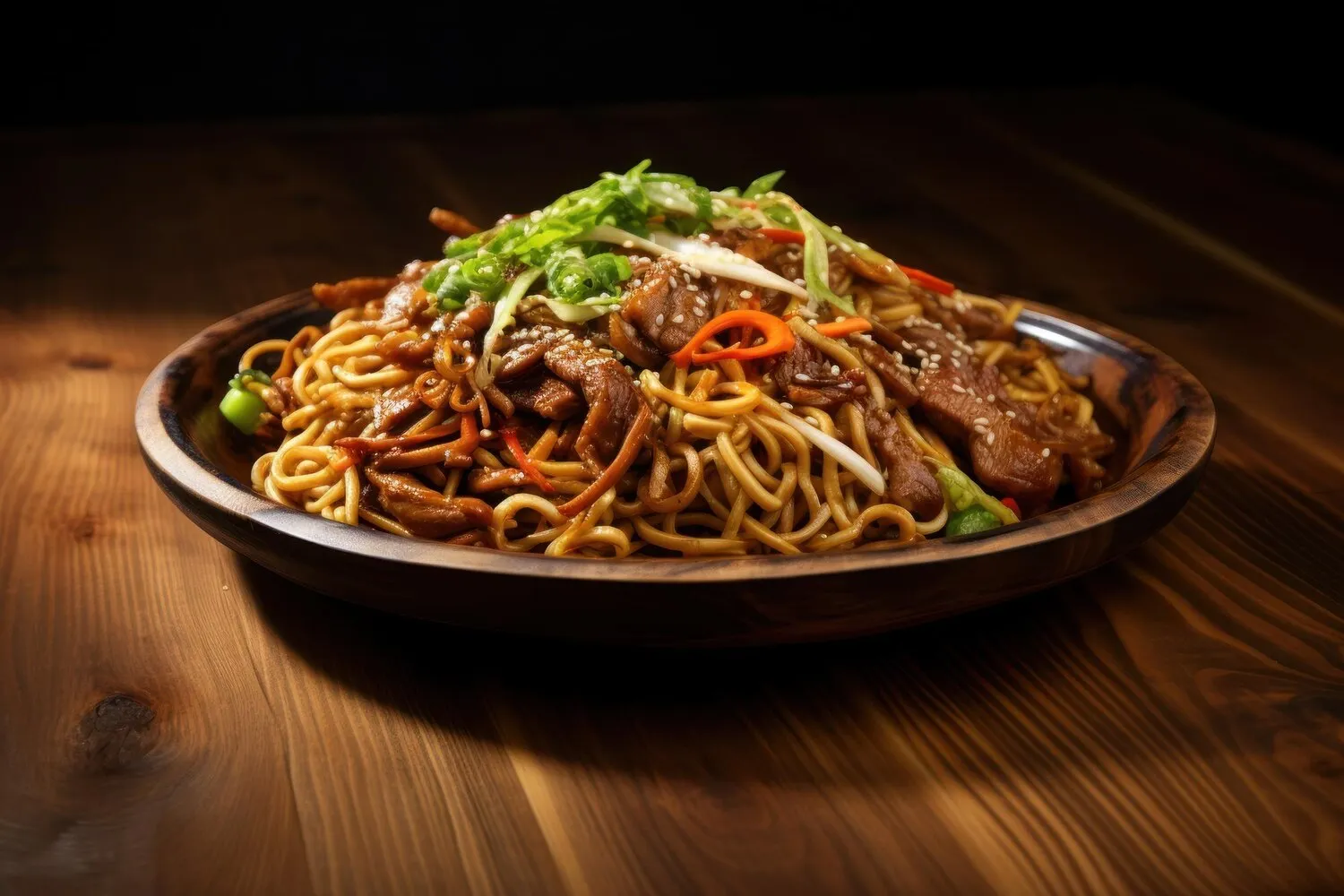
Pad Thai
Stir-fried rice noodles with tofu, shrimp, bean sprouts, peanuts, and tamarind sauce.
Nutrition Facts
* The % Daily Value (DV) tells you how much a nutrient in a serving of food contributes to a daily diet. 2,000 calories a day is used for general nutrition advice.
Pad Thai's emergence is linked to Thailand's efforts to establish a national identity in the 1930s. Prime Minister Plaek Phibunsongkhram promoted the dish as a way to reduce rice consumption and encourage the cultivation of rice noodles. The government actively distributed recipes and promoted the dish, making it a symbol of Thai cuisine and nationalism.
Pad Thai has become a globally recognized symbol of Thai cuisine, deeply ingrained in Thai culture and enjoyed by people worldwide.
National Dish
Pad Thai is often considered one of Thailand's national dishes, representing its culinary heritage and cultural identity.
Street Food Staple
It is a ubiquitous street food dish, readily available from countless vendors throughout Thailand. The preparation of Pad Thai on the streets is a vibrant and sensory experience.
Culinary Ambassador
Pad Thai has played a significant role in introducing Thai cuisine to a global audience, becoming a popular and well-loved dish in restaurants and homes around the world.
Variations
While the core ingredients remain consistent, there are many regional and personal variations of Pad Thai, reflecting the diversity of Thai culinary traditions. Ingredients can vary based on location.
Pad Thai is a symphony of sweet, sour, salty, and umami flavors, achieved through a careful balance of key ingredients.
The sweetness comes from palm sugar, the sourness from tamarind paste, the saltiness from fish sauce (or soy sauce for vegetarian versions), and the umami depth from the combination of shrimp (or tofu), dried shrimp (optional), garlic, and peanuts. The fresh lime juice squeezed on top before serving adds a final burst of acidity and brightness.
Tamarind Paste is Key
The quality and balance of tamarind paste are crucial for the signature sourness and depth of flavor. Experiment to find your preferred brand and adjust the quantity to your taste.
Don't Overcook the Noodles
Soak the rice noodles in warm water until pliable but not mushy. They will continue to cook in the wok.
High Heat is Essential
Use a hot wok or large skillet to ensure the ingredients cook quickly and evenly, preventing them from becoming soggy.
Prepare Ingredients in Advance
Have all your ingredients chopped, measured, and ready to go before you start cooking, as the process moves quickly.
Taste and Adjust
Continuously taste and adjust the seasoning to achieve the desired balance of sweet, sour, salty, and umami.
Explore additional Noodle Dish dishes and restaurants
Explore Noodle DishDiscover top dining spots and culinary experiences in Bregenz.
Explore BregenzLearn more about the food culture, restaurant scene, and culinary heritage of Austria.
Explore Austria